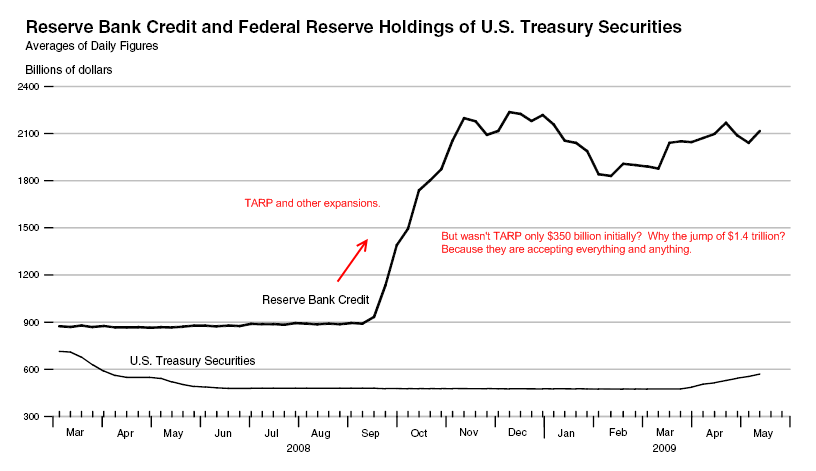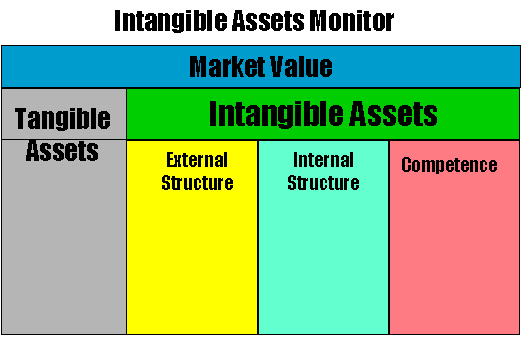The Invisible Balance Sheet
Post on: 16 Март, 2015 No Comment

�Karl-Erik Sveiby 8 September 1997,Dec 1998, Oct 2001. All rights reserved.
Let�s start by having a look at the full balance sheet of Nokia, the Finnish mobile phone company. With a market value of US$ 190 Billion Nokia was the undisputed world market leader in Mobile phones and Europe’s most valuable company at the end of 2000.
The material or visible component is the familiar balance sheet in annual reports. It itemizes material assets, and shows how they are financed. Nokia had US$11 Billion of tangible assets and they were duly reported in the Annual Report for year 1999.
To fund these assets Nokia had borrowed $5.3M in long-term loans, while the shareholders financed the rest, $5.7 Billion in equity (shareholders�capital).
Also published in the Annual Report 1999. However, the Annual Report only tells a very small part of the picture. When the shares in Nokia’s equity traded on the Helsinki stock exchanges in August 2000 a new investor in Nokia was willing to pay $40.90 per share, making the market capitalisation a whopping $190 Billion. And this money is owned by the shareholders, however the Annual Report does not give any clues to the huge discrepancy between the accounts and the price paid for the shares.
Take a look under the surface! There you find no less than
$183 Billion in intangible assets. From where did I derive that figure? It is the difference between the market value
$190Billion and the net book value $5.7 Billion.
The mystery deepens. If Nokia at this point in time had been acquired by another company (say Intel), Intel would have had to pay the equivalent of at least $190 Billion. How would the accountants have accounted for it? The tangible assets woul be no problem, nor the debt. However, the rest $183 Billion would need something that balances. The accountants would have entered an Intangible Asset equal to the cost in the accounts and they would call it Goodwill. Lo and behold! Now the value is suddenly visible!
Why are the intangible assets not accounted for in the first place? The accountants will tell you that it is not their responsibility. So let us try and untangle the mystery.
Three Families of Intangible Assets
The invisible intangible part of the balance sheet can be classified as three families:
Internal structure consists of patents, concepts, models, and computer and administrative systems. These are created by the employees and are thus generally owned by the organization, and adhere to it. Sometimes they can be acquired from elsewhere. Decisions to develop or invest in such assets can be made with some degree of confidence, because the work is done in-house, or bought from outside. Also the culture or the spirit belongs to the internal structure. The internal structure and the people together constitute what we generally call the organization. (How to measure internal structure ).
External structure consists of relationships with customers and suppliers, brand names, trademarks and reputation, or image. Some of these can be considered legal property, but the bond is not as strong as in the case of internal assets because investments in them cannot be made with the same degree of confidence. The value of such assets is primarily influenced by how well the company solves its customers� problems, and there is always an element of uncertainty here. Reputations and relationships can be good or bad, and can change over time. (How to measure external structure ).
The intangible assets are not particularly liquid, and unlike the material assets, they may or may not be owned by the company.
Because of the reluctance of banks to lend for investment in intangible assets, the development of intangible assets is mostly self-financed. In other words, the invisible assets are matched, on the financing side of the balance sheet, by equally invisible finance, most of which in the form of invisible equity.
A company such as Nokia has little machinery, other than its employees and because only people can act, they are both the minders of the machines and the machines themselves. For the most part, their competence is directed outwards, to the task of generating revenue, by solving customers� problems. It is this outward-directed energy that creates the relationships, networks, and image that comprise the organisation�s external structure.
Similarly, it is the smaller amount of human competence that is directed inwards that creates, maintains, develops or erodes the organisation�s internal structure.
Individual competence is people�s ability to act in various situations. It includes skill, education, experience, values and social skills. Competence cannot be owned by anyone or anything but the person who possesses them, because when all is said and done employees are voluntary members of the organization. A case can, however, be made for including competence in the balance sheet, because it is impossible to conceive of an organization without people. People tend to be loyal, if they are treated fairly and feel a sense of shared responsibility. That is why companies are generally willing to pay some kind of compensation to those who retire, or have to be laid off. (How to measure competence ).
This kind of compensation varies from country to country, but often takes the form of redundancy pay, umbrella agreements (golden parachutes) and pensions. Although such commitments are not recorded as liabilities in the balance sheet, they can be seen as pledges or commitments, like leasing or rental contracts, and thus a form of invisible financing of employee competence.
So should we start using the invisible balance sheet for measuring the intangible assets? That depends on the purpose of measuring. Valuation in $$$ is necessary for buying or selling a company or an asset, as on the stock markets. However it is not a particularly useful method for establishing performance nor for learning about a business.
Another good reason not to account for the invisible value is that the share price of a company is a perception about future and it will fluctuate with the general economy. To illustrate the vagaries with $$$-measuring let’s re-visit Nokia one year later, August 2, 2001.

It appears that Nokia lost US$86 Billion worth of Intangible Assets or Intellectual Capital in a year! If this were true it would the largest ever recorded corporate loss in the world and Jorma Ollila, Nokia’s CEO, would have been unceremoniously ousted.
However, Mr Ollila is still in the driver’s seat and Nokia has even strengthened its position as the market leader. The reason for the enormous loss in Nokia’s intangible value is that in the year that followed August 2000 the investors have taken a firm look at the future prospects of the telecom market and not enjoyed what they saw. A quick downgrade of all telecoms followed.
Nokia is a powerful reminder that $$$-valuation is not a particularly good method when assessing corporate performance. Nor is it useful for learning.
The vagaries of $$$-valuations is why I have designed an alternative approach to measuring, called the Intangible Assets Monitor. The Intangible Assets Monitor is a non-financial method to follow up the Intangible Assets and a presentation format.
Background of the Concepts
The three-family theory was first published in (Sveiby & al. 1988): Den nya �rsredovisningen, (The New Annual Report) and 1989 in the Swedish book The Invisible Balance Sheet, the translation of which you may download from here. This approach to measuring intangibles became widely used in Scandinavia and is the theoretical foundation of Skandia’s Navigator launched in 1993. The theory also underpins the concept of Intellectual Capital. Read more about IC and the history of Intellectual Capital here.
People are the only true agents in business; all assets and structures, whether tangible physical products or intangible relations, are the result of human action and depend ultimately on people for their continued existence.
People are constantly extending themselves into their world by tangible means like houses, gardens and cars and through intangible associations with corporations, ideas, and other people. Marshall The media is the message McLuhan (Media 1967), called these intangible extensions media. It was McLuhan who made me to see that individuals in organizations create external and internal structures to express ourselves.
If the managers of a car or soap company direct the efforts of their people inwards, they may create intangible structures like better processes, or new designs for products, for instance. When they direct attention outwards, they can create, in addition to tangible things, like cars or soap, intangible structures, like customer relationships and new experiences.
The economic value of a customer relation is no more invisible than the market value of a house. The reasons why the value of a relation seems invisible today is because it does not have a generally accepted definition and that it is not measured according to a standard. But these drawbacks do not mean that it is impossible or unnecessary to measure it, only that comparisons between companies and over time are difficult to make.
People in an organization can use their competence in mainly two directions: outwards working with customers or inwards maintaining/building the organization. When they work with customers they create customer relations and an image in the marketplace that is partly owned by the corporation, let us call this an External Structure. When people work internally they create an Internal Structure, in management literature called organization.
The structure is partly independent of individuals and some remains even if a large part of the employees leave. Even if the most valuable individuals leave a company that depend heavily on individuals, like a consultancy firm, at least parts of the internal and external structures will probably remain intact, like the name, software, manuals, registers, etc. which can serve as a platform for a new start.














